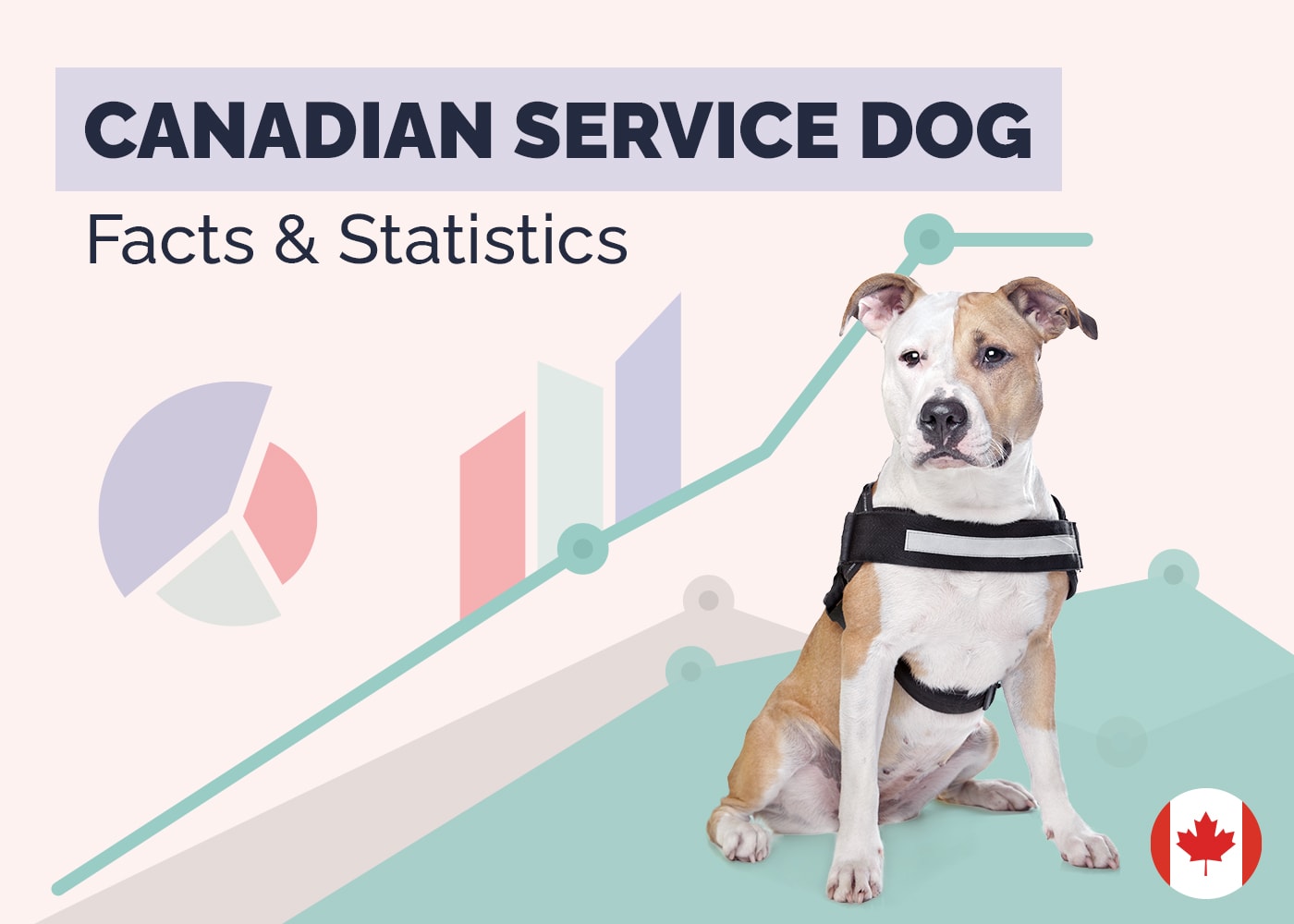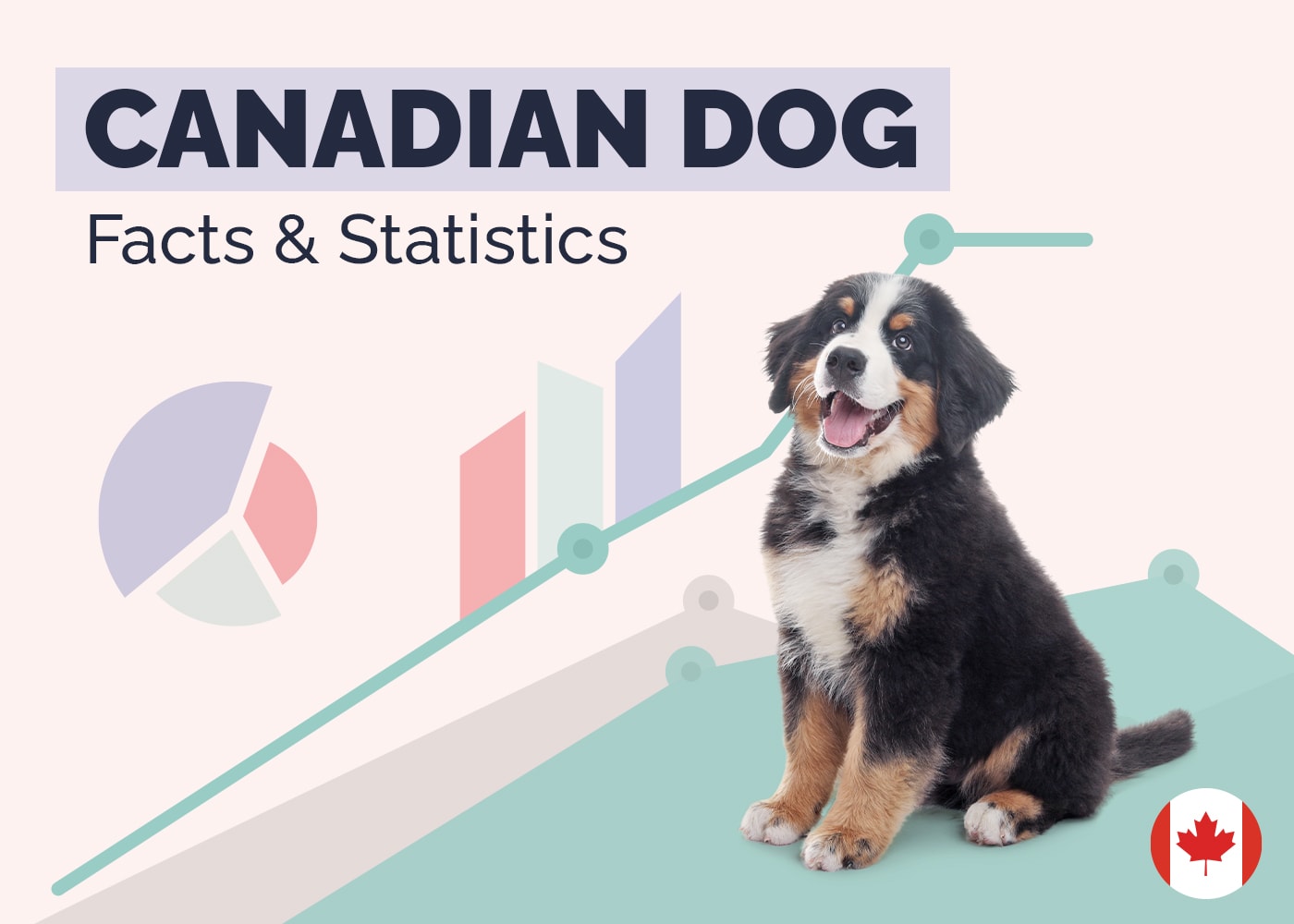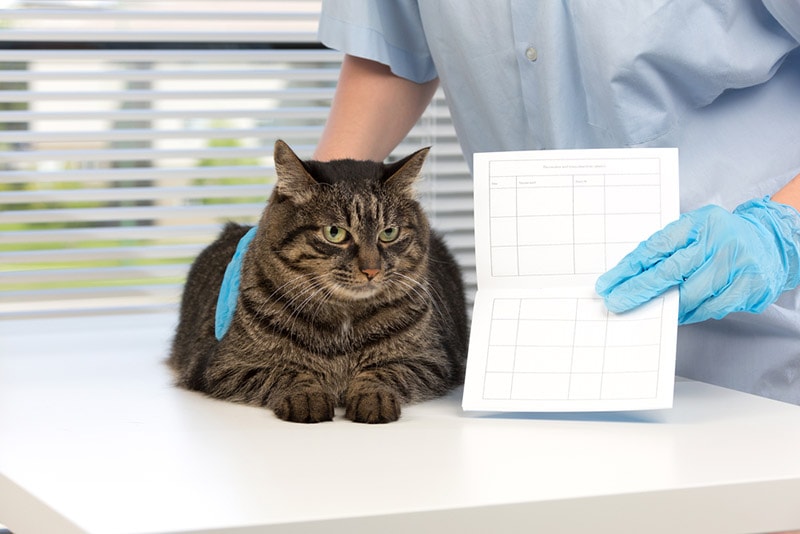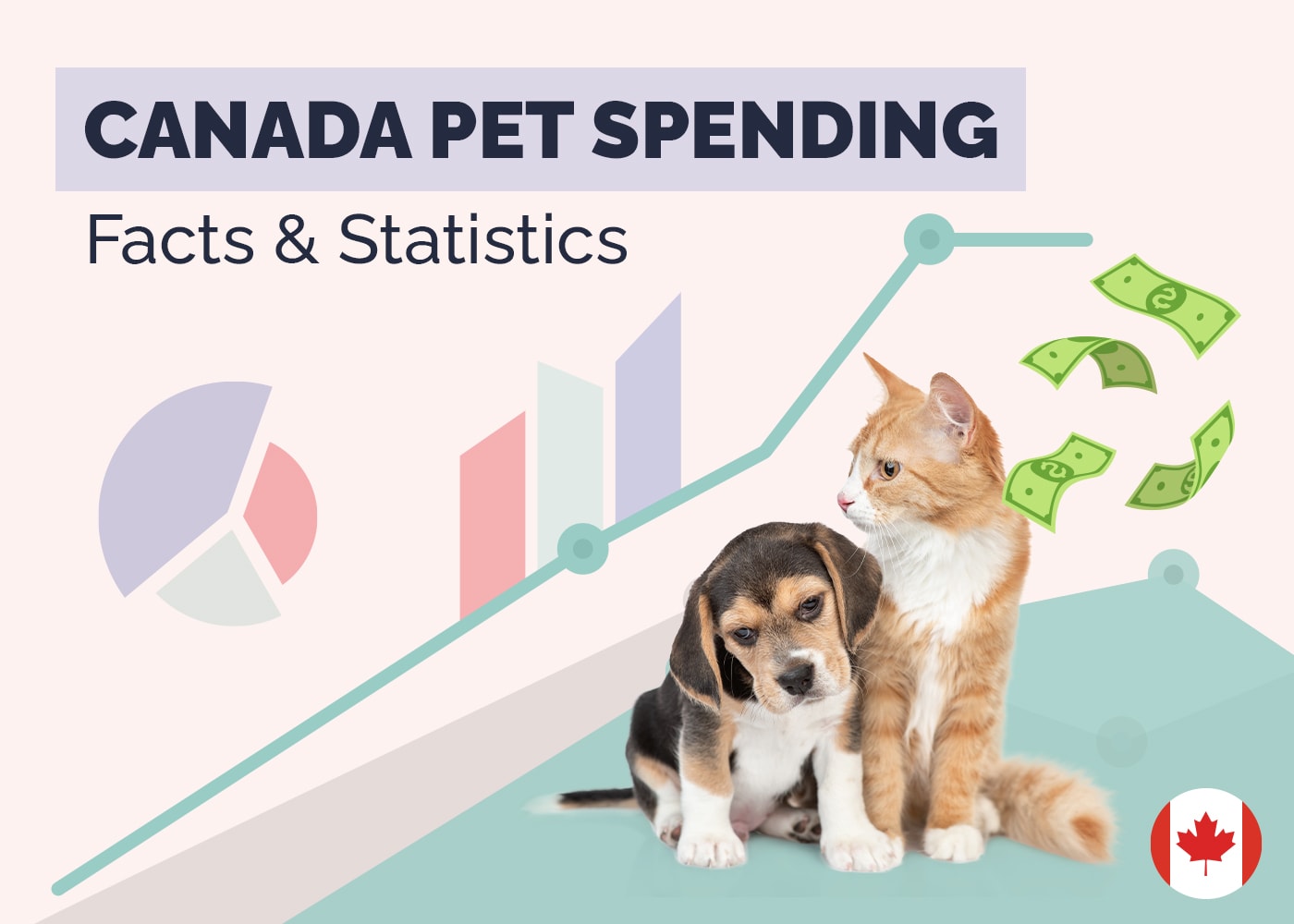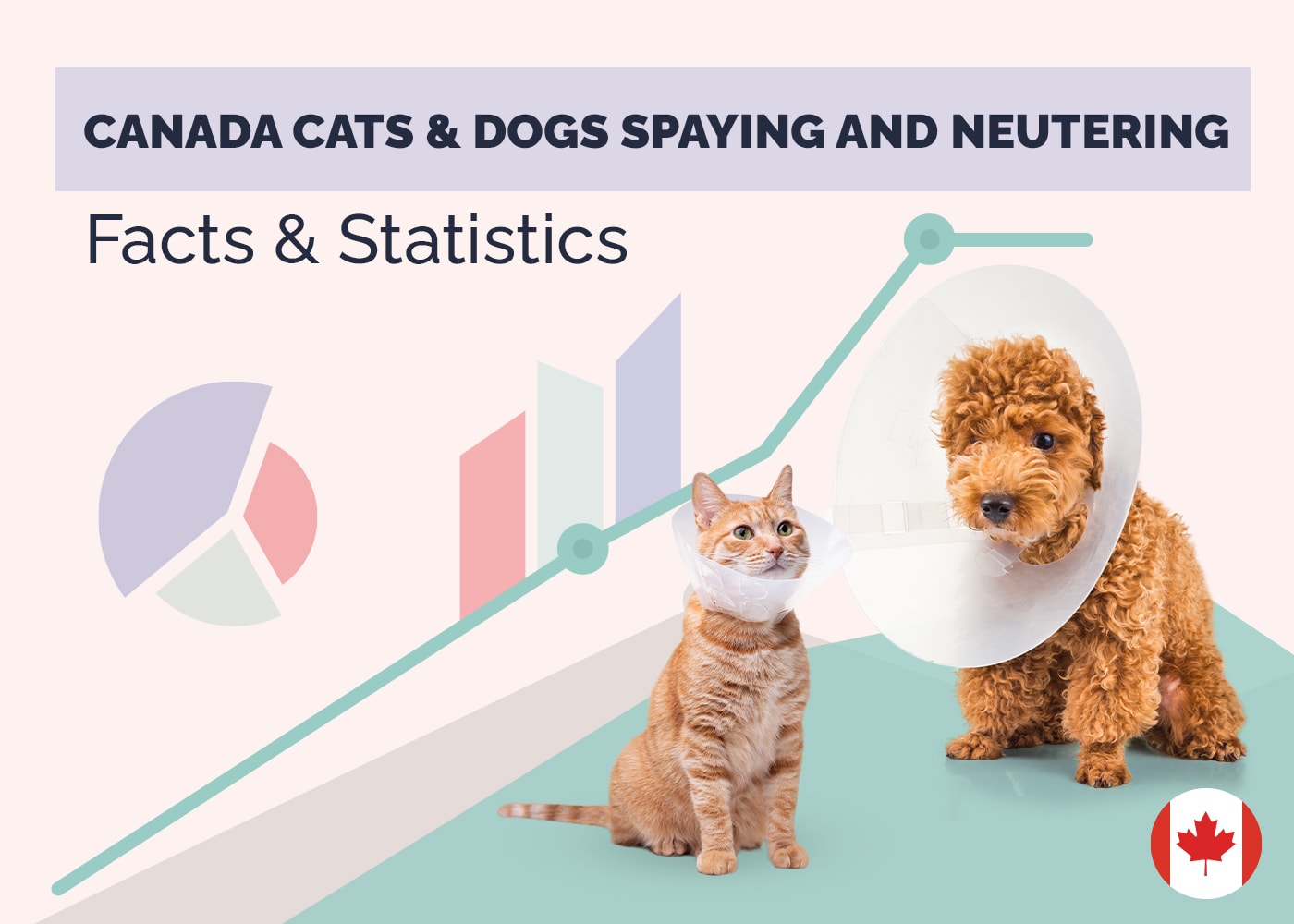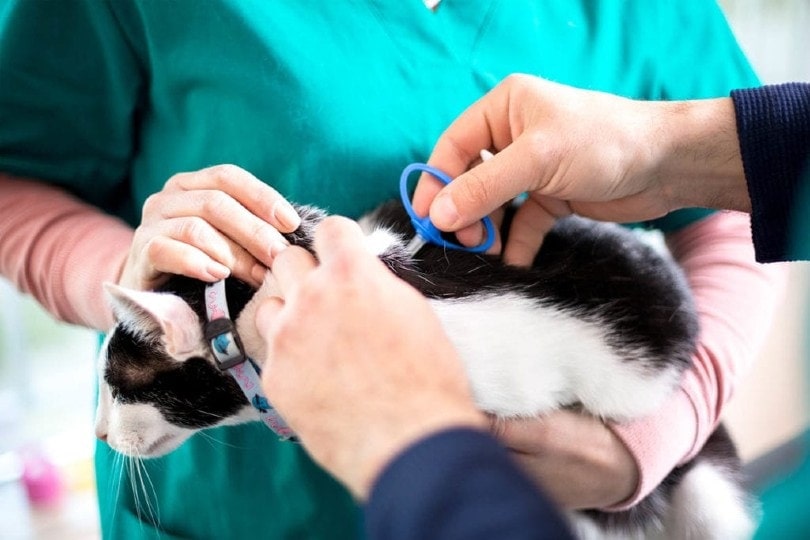16 Interesting Canadian Pet Industry Statistics & Facts (2024 Update)
Updated on
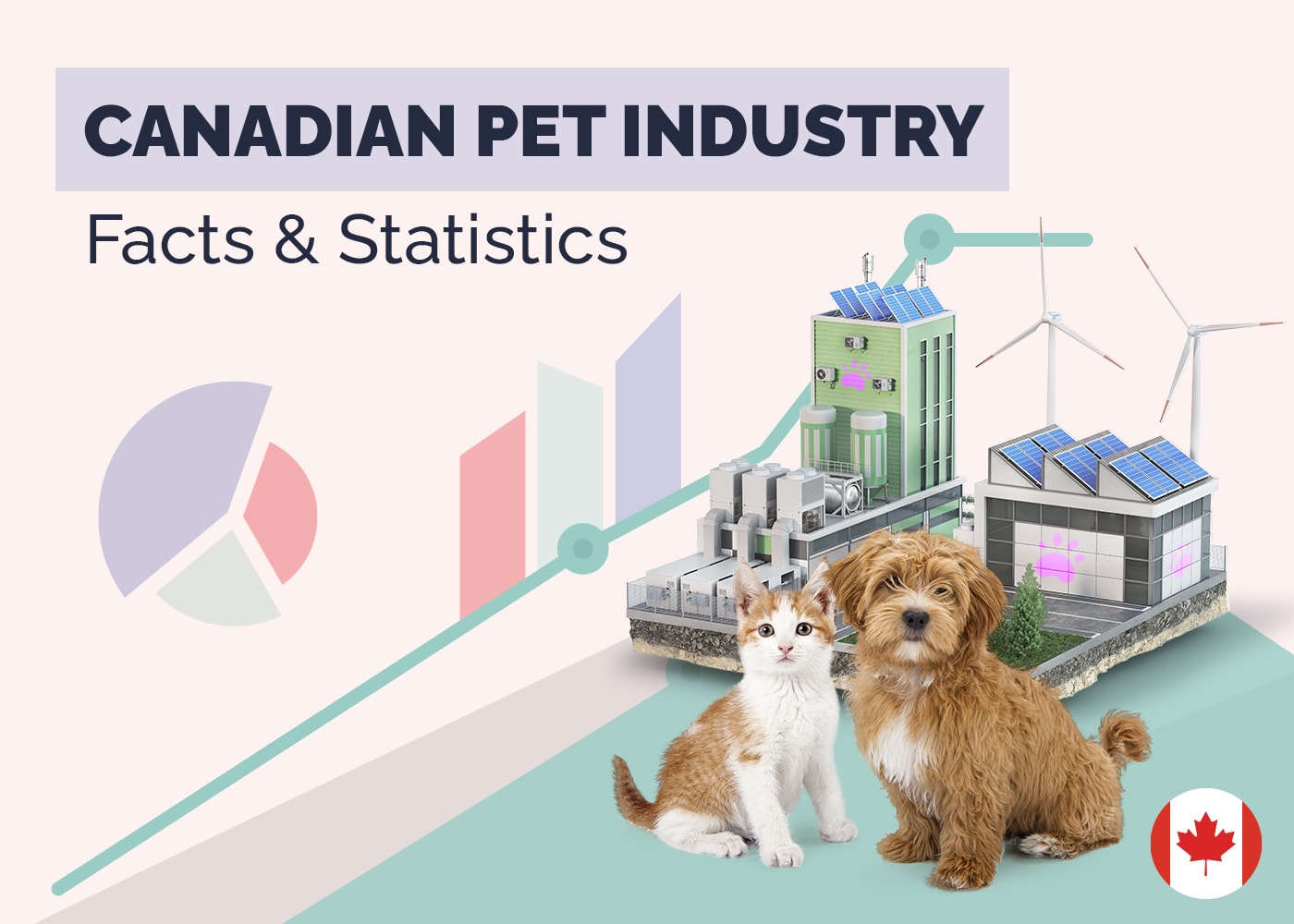
Click to Skip Ahead
Note: This article’s statistics come from third-party sources and do not represent the opinions of this website.
Canada has a booming pet industry that has been seeing a lot of growth over the past five years. This growth may be because Canadians welcomed a plethora of new pets (three million!)1 into their homes, especially during the COVID-19 pandemic.
Keep reading to find 16 shocking Canadian pet industry statistics on the cost of pet ownership, the exotic animal population, the pet market, working in the pet industry, and pet wellness.
The 16 Canadian Pet Industry Statistics
- The annual cost of owning a pet in Canada in 2021 was $2,430.
- Canadians’ pet-related spending has increased by 17.1% in three years.
- Canadians spent $5.7 billion on their pets in 2020 alone.
- Only 1.2% of Canadians have insurance for their pets.
- At $743, dental cleanings account for the biggest portion of Canadian cat owners’ pet-related expenditures.
- With 776 stores in the province, Ontario is home to the most pet and pet supply stores in Canada.
- There are 419 animal food manufacturing establishments in Canada.
- The market size of Canada’s pet stores in 2023 is $3.4 billion.
- Dog food accounted for most of the pet food sales at over $2.8 billion in 2023.
- Pedigree is the largest pet food brand in the country, with retail sales of $258.2 million in 2023.
- Canada imported over $1.3 billion of pet food in 2021.
- Canada exported over 315 million kilograms of pet food in 2021.
- There are 6,080 businesses in Canada in the veterinary services industry.
- There are 4,691 businesses in Canada in the pet care industry.
- There were 1,265 job vacancies for veterinarians across Canada in the second quarter of 2022.
- There are approximately 15,322 veterinarians in Canada.
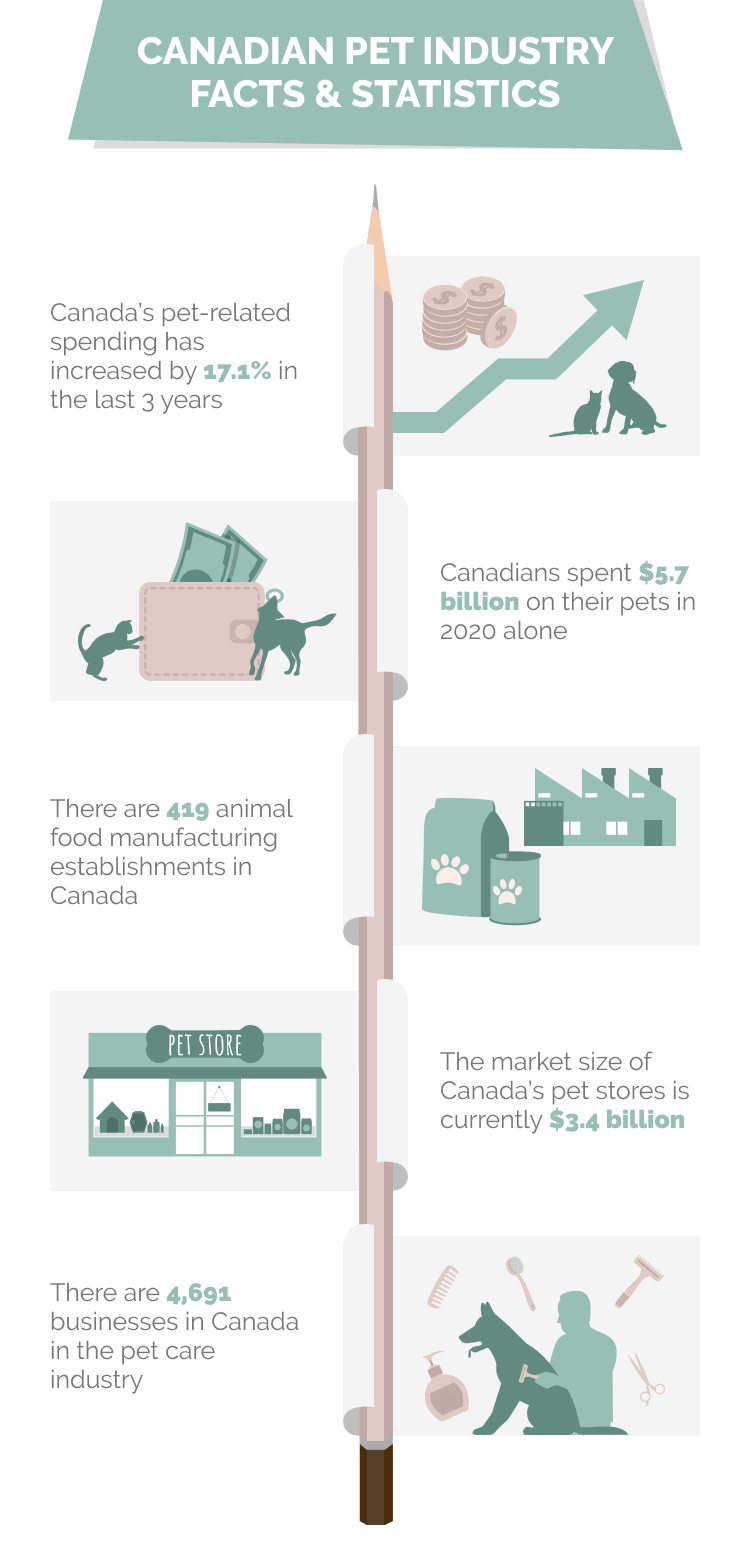
Cost of Pet Ownership in Canada
1. The annual cost of owning a pet in Canada in 2021 was $2,430.
(Hello Safe)
In 2021, Canadians were spending $2,430 per year on pet care, compared to the $2,075 annual spending reported in 2018. Broken down further, $2,912 is the average yearly budget for dog owners, while the average budget allocated for cat owners is $2,150.

(Hello Safe)
Since 2018, the annual cost of pet ownership in Canada has been slowly increasing. The average budget increased by 17.11% between 2018 and 2021. The largest evolution rate was between 2018 and 2019 when annual spending went up by 9.49%.
3. Canadians spent $5.7 billion on their pets in 2020 alone.
(CPA Canada)
In 2020, Canadians spent over $5.7 billion collectively on caring for their pets. This number is slightly higher than in 2019 when $5.4 billion was spent. This may have to do with the country’s sharp uptick in adoption rates during the pandemic.

4. Only 1.2% of Canadians have insurance for their pets.
(Hello Safe)
Canada is far behind other countries when it comes to investing in pet insurance for their four-legged friends. Just 1.2% of pet owners are insured in Canada, compared to 31% in the United Kingdom and 48% in Sweden.
(Statista)
Canadian cat owners spend more money on dental cleanings than other pet-related expenses. The average annual cost for this service is $743. The next highest expense was pet insurance at $638 and food at $576.
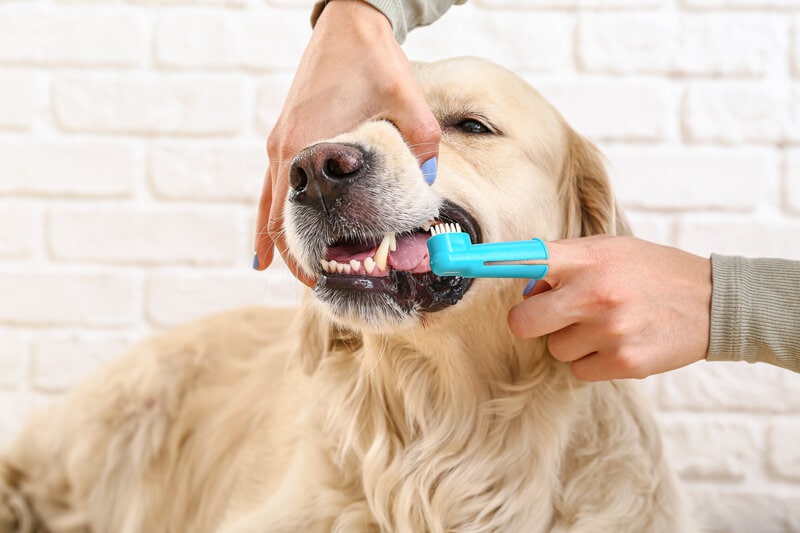
 Pet Industry Market in Canada
Pet Industry Market in Canada
6. With 776 stores in the province, Ontario is home to the most pet and pet supply stores in Canada.
(Statista)
Canada’s most populous province is home to the highest number of pet-related stores in the country. Ontario has around 776 stores, with Quebec and British Columbia, the next most populated provinces, coming in second and third. Quebec has 506 stores, and B.C. has 347.
7. There are 419 animal food manufacturing establishments in Canada.
(Statista)
Ontario has the most animal food manufacturing establishments at 132, with Quebec and B.C. following at 103 and 58, respectively.
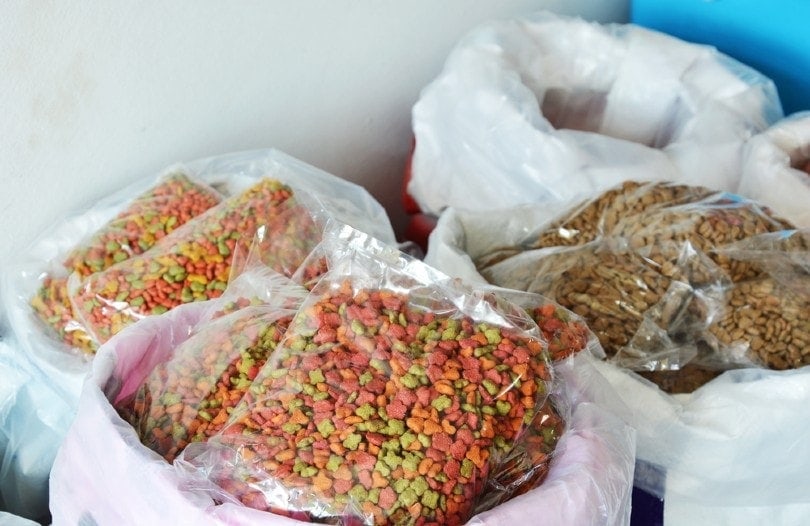
8. The market size of Canada’s pet stores in 2023 is $3.4 billion.
(Ibis World)
The market size, measured by overall revenue, of the pet store industry in Canada is $3.4 billion. This number is rising, growing 6.3% annually between 2018 and 2023. The growth rate is expected to increase by 0.9% over the next year.
9. Dog food accounted for most of the pet food sales at over $2.8 billion in 2023.
(Expert Market Research)
Total retail dog food sales experienced a compound annual growth rate of 6.3% between 2016 ($2.2 billion) and 2023 ($2.823 billion). If the current trends in the dog food industry continue, the CAGR growth should reach 4.40%, estimating that the Canadian pet food market value will be CAD 11.4 billion by 2032.
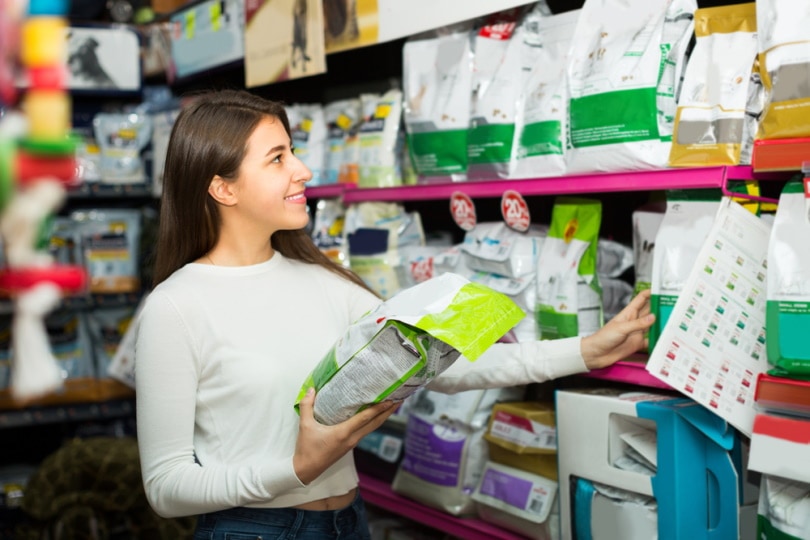
10. Pedigree is the largest pet food brand in the country, with retail sales of $258.3 million in 2023.
(Expert Market Research)
Pedigree (Mars Inc) had retail sales of $258.3 million in 2023. There was a slight decrease in retail sales when compared to $260.8 million in 2020. However, as pet food companies continue to expand and bring on more products, competition gets more intense.
11. Canada imported over $1.3 billion of pet food in 2021.
(Pet Food Association of Canada)
Canada’s biggest importer is the United States at over $1.2 billion, with Thailand coming in second at $55 million. This equates to approximately 392 million kilograms of pet food from the U.S. and 9 million from Thailand.

12. Canada exported over 315 million kilograms of pet food in 2021.
(Pet Food Association of Canada)
Most of the 315 million kilograms of pet food the country exported in 2021 went to the United States. 118 million kgs were sent to the U.S., with 74 million going to China and 11 million to South Korea. Canada exported over $1 billion worth of pet food in total in 2021.
Working in the Pet Industry
13. There are 6,080 businesses in Canada in the veterinary services industry.
(Statistics Canada)
These 6,080 businesses include veterinary clinics, animal hospitals, testing labs, surgery service clinics, and livestock vet services.

14. There are 4,691 businesses in Canada in the pet care industry.
(Statistics Canada)
These 4,691 businesses include pet care companies outside the veterinary world, such as dog walking services, animal shelters, pet grooming services, pet sitting services, and boarding kennels.
15. There were 1,265 job vacancies for veterinarians across Canada in the second quarter of 2022.
(Statistics Canada)
During quarter two of 2021, there were 1,065 job openings for veterinarians. A year later, the number jumped to 1,265, up 18.8%. The animal health technologists and veterinary technician sector also saw many job openings. There were 1,325 in the second quarter of 2022, compared to 1,165 in the same time frame in 2021.

16. There are approximately 15,322 veterinarians in Canada.
(Canadian Veterinary Medical Association)
There are 15,322 veterinarians in Canada as of 2022. Sixty-two percent of whom are female, and 37% of whom are male. The remaining 1% are those with an undisclosed or unknown gender identity. Most veterinarians live in Ontario (5,383), with Quebec (2,851) and Alberta (2,376) coming in second and third.
Frequently Asked Questions About the Pet Industry in Canada
Do any provinces in Canada allow wild animals as pets?
Canada’s laws regarding exotic and wild animals are inconsistent and poorly regulated. Several laws and regulations are in place, but they only apply to certain areas and can vary drastically across the country.
For example, Certain exotic animals can legally be kept as pets in some provinces but not in others. British Columbia and Ontario both allow servals to be kept as pets, and, as such, 85% of the pet servals in Canada live in these provinces. In comparison, Alberta and Quebec prohibit ownership of servals, so there are none kept as pets in these provinces.
Municipalities sometimes take things into their own hands and apply stricter laws regarding exotic pets.
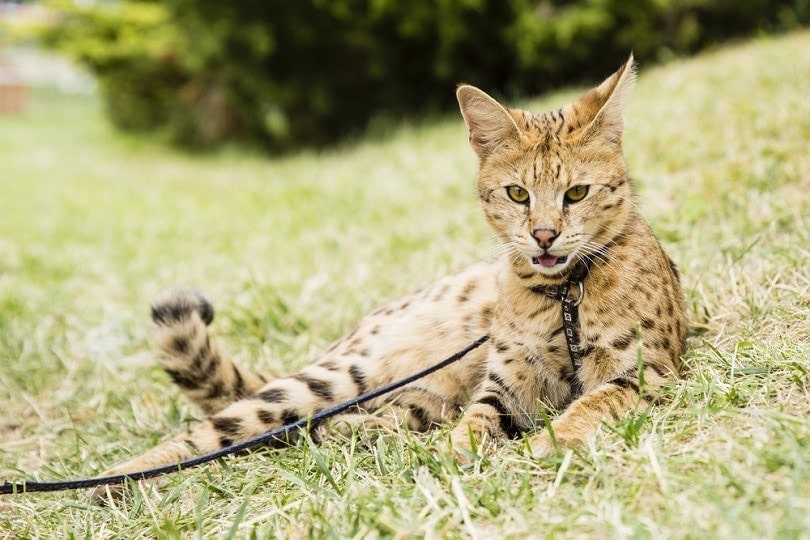
Is Canada importing more pet food than it is exporting?
Canada imports more pet food than it exports. In 2021, Canada imported over $1.3 billion worth of pet food, up from $131 million in 2020. The country exported just over $1 billion in the same year, up from $42 million the year prior. (Pet Food Association of Canada)
Is it more expensive to care for a cat or dog in Canada?
Canadian dog owners paid nearly $4,000 in pet care expenses in 2022, with most of this budget being allocated to food ($1,200), pet insurance ($1,160), and dental cleanings ($743). (Statista)
On the other hand, cat owners paid almost $2,800 in 2022 for cat-related expenses. Most of this budget went towards dental cleanings ($743), though pet insurance ($638) and food ($576) also contributed a fair bit to the annual costs. (Statista)
Conclusion
Canada is undoubtedly a pet-loving country willing to spend a good portion of their income on their fur babies. Though improvements may be made regarding their pet’s wellness, it’s clear that Canadian pet owners care for their pets.
There is no denying that the pet market in Canada is booming. The country is exporting more pet food now than ever, so it will be interesting to see where these statistics lie in the next few years.
Featured Image Credit: LightField Studios, Shutterstock



